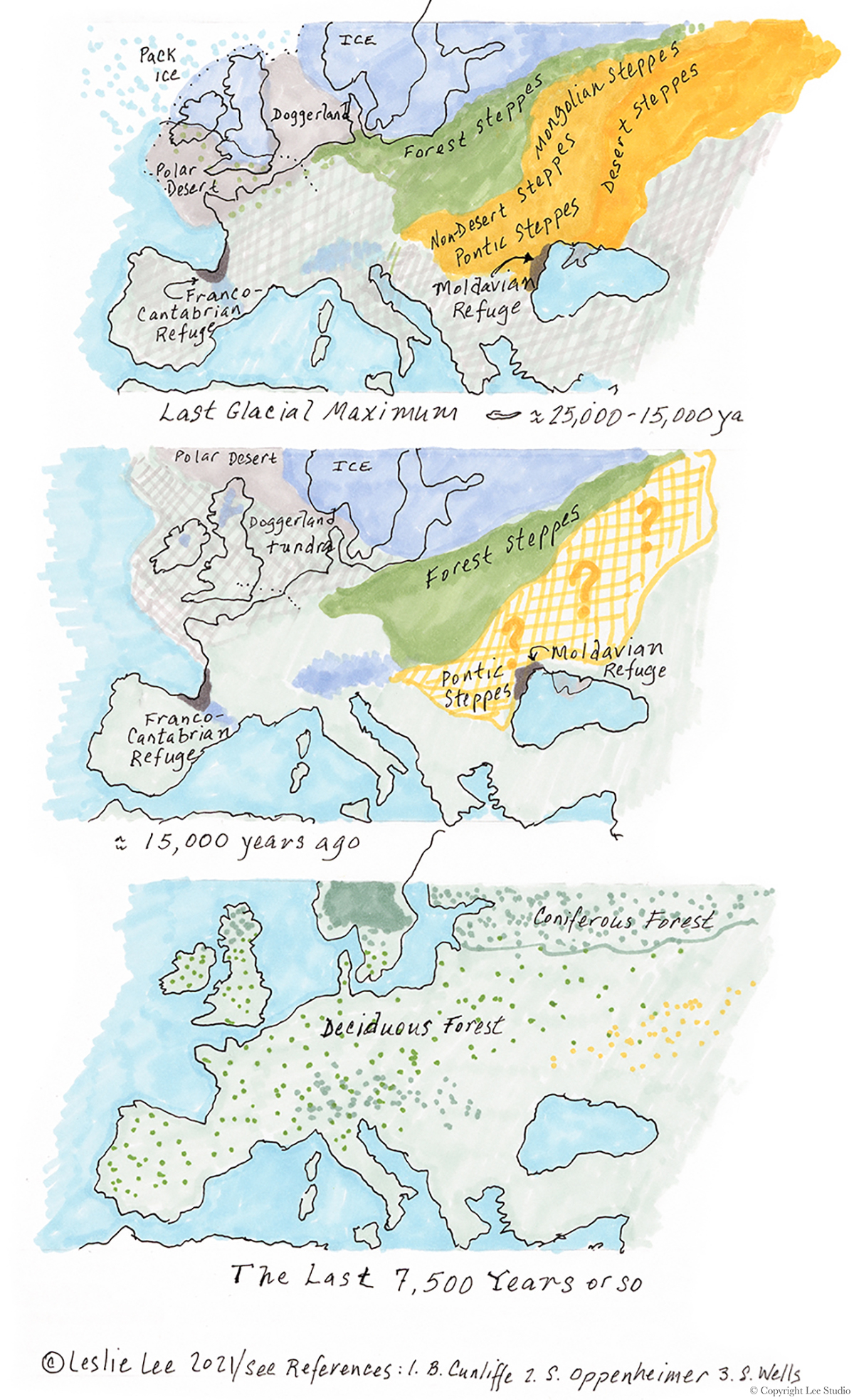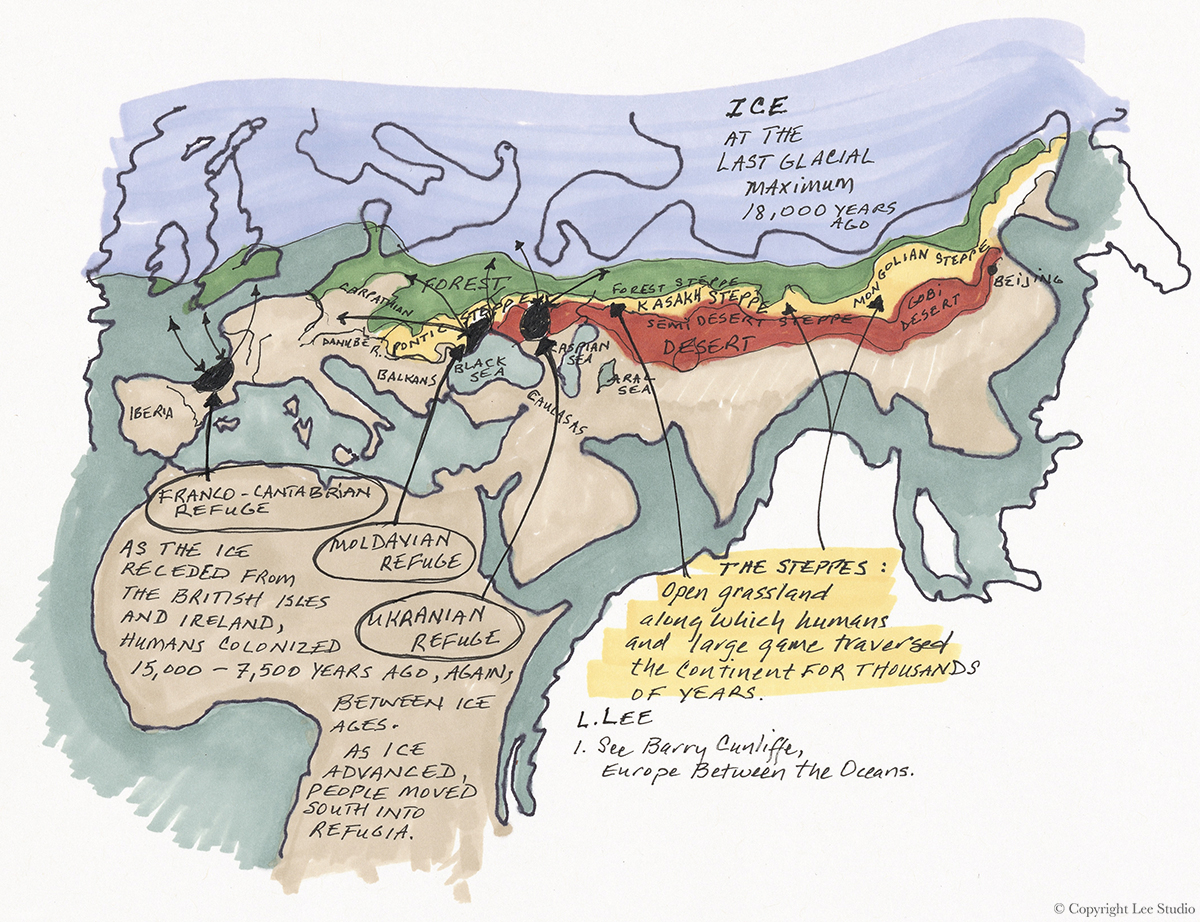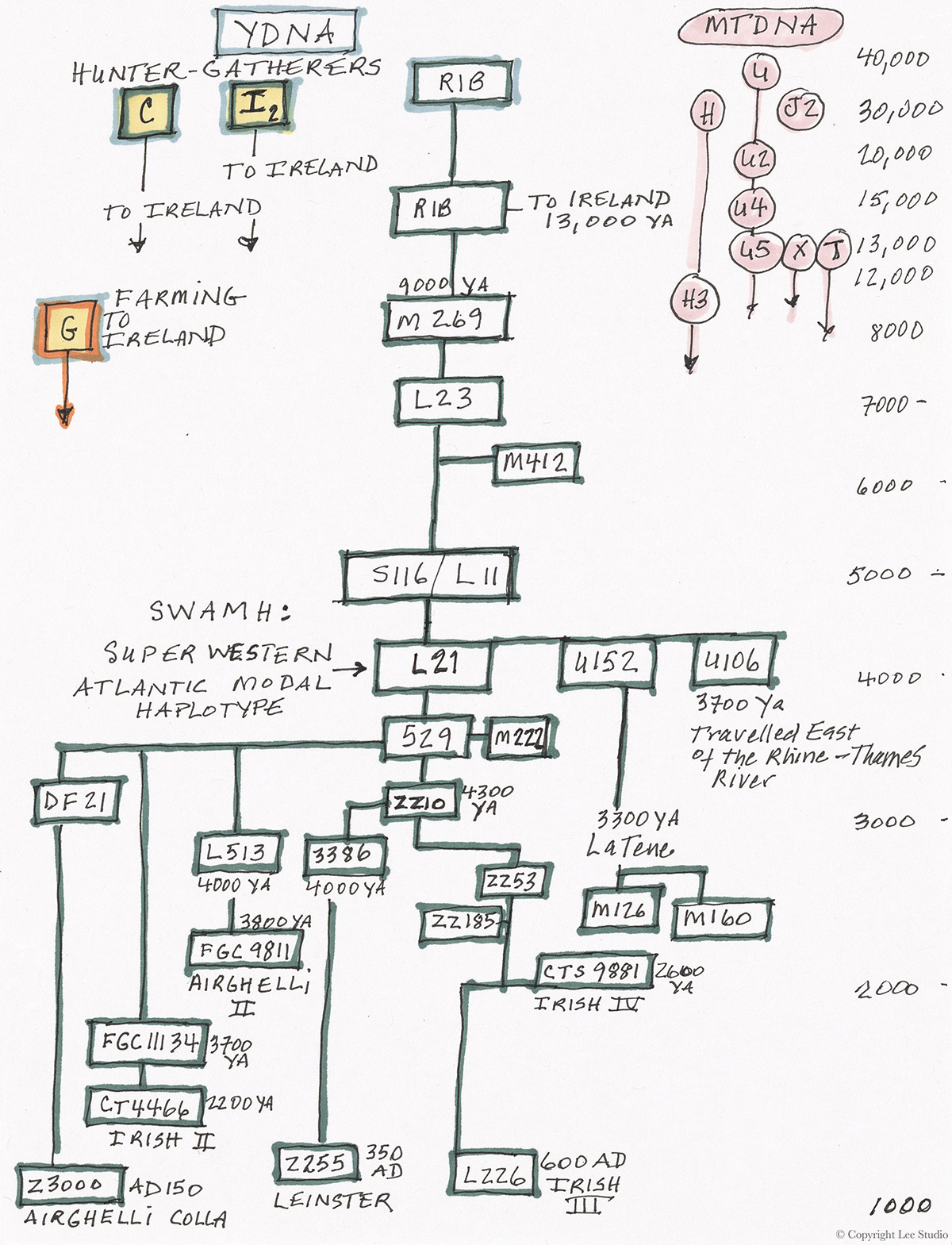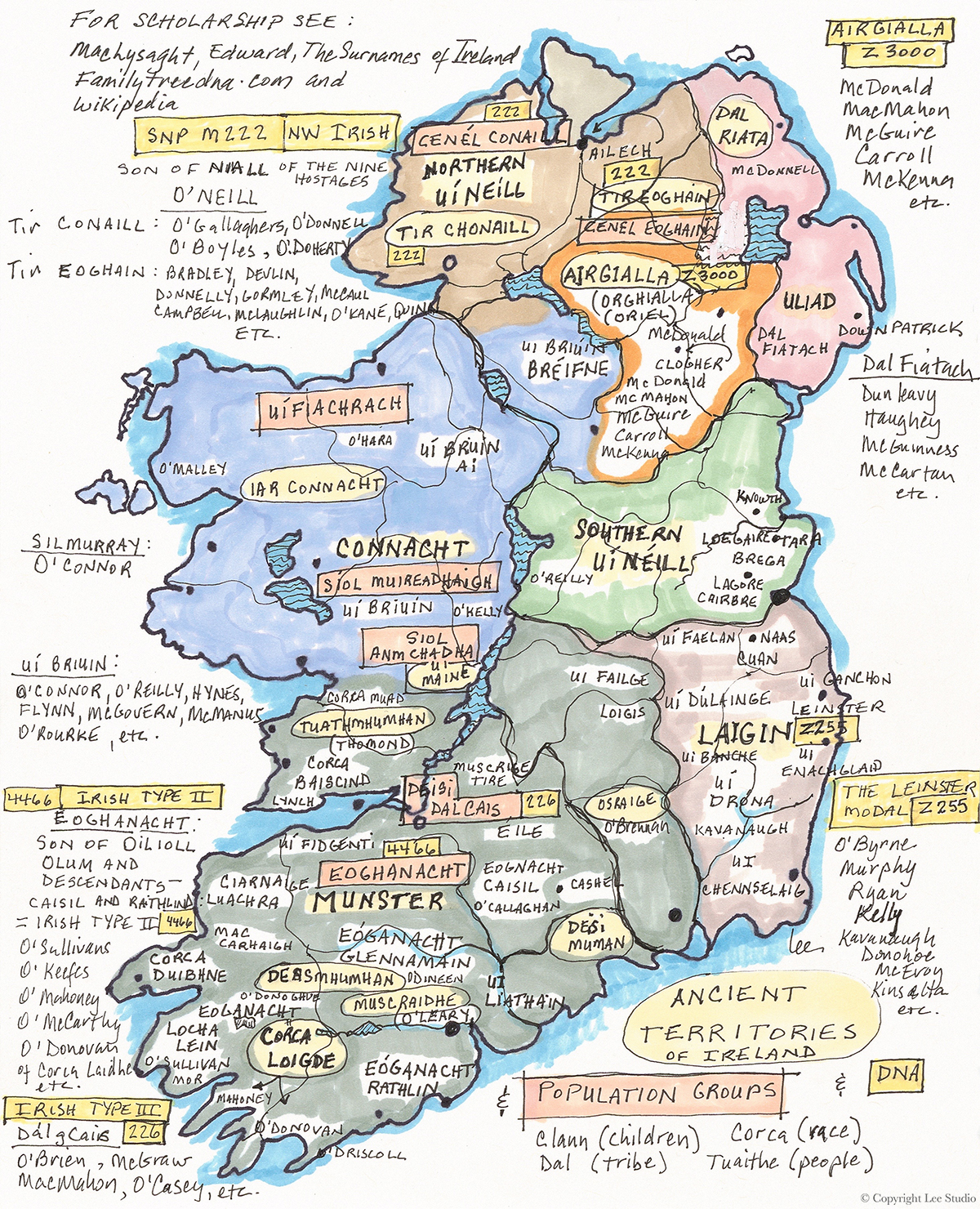2007 Scotland & Ireland
Six Degrees of Latitude, Travel Tales of Scotland and Ireland

Two million years ago in the Pleistocene Epoch
It was the Ice Age. Glaciers formed and melted in cycles of heat and cold, flooding and drying. So much of Earth’s water formed as icy glaciers on land that ocean levels dropped four hundred feet. This phenomenon exposed shorelines that are now far out under the ocean and dried the water in the English Channel. The North Sea between Denmark and Great Britain became a single landmass of tundra geologists call Doggerland.
Eight hundred thousand years BP (before present) in the Upper Paleolithic Era
People and game traversed the polar deserts. During warm phases, these lowlands refilled with water. Eight hundred thousand years ago,early humans came and went across Eurasia. How we might be related to these people, or not, is unconfirmed. Four hundred thousand to forty thousand years ago, humans called Neanderthals might have lived in Eurasia. Scientists don’t agree on whether or not they became fully extinct. Recent studies suggest Homo sapien sapiens interbred with Neanderthals and that some modern people carry traces of this mingling in their genetic code.
Timeline of Prehistory
| 2,580,000–11,654 BP | Pleistocene Epoch |
| 3.3 million–11,654 | Paleolithic |
| 50,000–11,654 | Upper Paleolithic |
| 15,000–5,000 | Mesolithic |
| 12,000–5,500 | Neolithic |
| 7,000–6,000 | Chalcolithic (Copper Age) |
| 5,300–3,200 | Bronze Age |
| 3,400–400 | Bronze Ages in Scotland, Ireland, and England |
| 2,500–AD 800 | Iron Age and Early Historic Period |
The Steppes Grassland and Ice Age Refuges
What was the land like at the dawn of modern humans? Imagine a blank sheet of ice covering the northern hemisphere to around the 50th parallel, not far from modern Moscow. South of this ice existed a polar desert for hundreds of miles. South of that stretched a giant swath of tundra, or grassy steppe, from east to west from Mongolia to the Balkans, a veritable conveyor belt for large game and the humans who hunted them.

Three times in fifty thousand years, advancing glaciers forced entire populations into pockets of refuge before warming climates melted receding glaciers into lakes and rivers, once again creating the life-giving steppes. During these times of warmth, people moved north into Britain, Ireland, Norway, and along the northern coastlines. Masses of people grouped up, hunted, interbred, and retreated to refuges when the glaciers returned. They continued to interbreed and migrate in complicated patterns of coming together and separating. One can visualize not a family tree but a great river delta of crisscrossing ancestries.
These were the hunter-gatherers of the Mesolithic Era, and they formed the bedrock genes in Eurasia and Western Europe referred to as Basal Eurasians. Nomenclature for DNA has been complicated by nascency of the field of human genetics and the number of geneticists trying to establish different naming systems. To choose but one system, Oxford geneticist Bryan Sykes attached a letter of the alphabet to various real people who were clan mothers and fathers. In Ireland, the male Y–DNA of C and I arrived thirty thousand years ago with the early female mtDNA, short for mitochondrial DNA, of U, H, and J2.
The ice age of twenty thousand years ago created so much polar ice that ocean levels again dropped four hundred feet. Any artifacts lie under that now-submerged coastline. When it was cold and dry, the English Channel and Celtic Sea were frozen land across which humans and game traveled on one side or the other of the single Rhine-Thames River. Genetic echoes of this division are seen in inhabitants of East Coast England,, who differ from those who arrived in west England, west Scotland, and Ireland on the southwest side of the great river.
In times of glacial advance, the most western of these hunter-gatherers took refuge in the Basque territory on the northern border of what are now the countries of Spain and France. Experts call this the Franco-Cantabrian refuge. In those times, women designated with U2, U4, U5, X, and T genes arrived around the same time that men of an early R1b genetic signature from the Pontic Steppes region arrived in the isles.
Archeological evidence places people in Ireland nine thousand years ago. The female line, H3, arrived. Eight thousand years ago, farmers from the Near East began to move west along the Mediterranean Sea, reaching Western Europe, Sardinia, and the isles. Within a thousand years, the male farming genes of G mixed with those of the early hunter-gatherers. Female DNA lines of J and K traveled with them.

To understand the Celts, or Gaels, it is important to understand a little about male DNA. Geneticists examine Y, the male sex chromosome, to measure the distance between mutations to determine the passage of time. Like a clock, the Y chromosome measures time and marks it with a mutation. Men also carry the X chromosome of the maternal, or mitochondrial, line, often referred to as mtDNA, but men cannot pass down mtDNA to their offspring. Only women pass mitochondrial DNA to their children. The mutations themselves are a roadmap of ancestry.
The most successful male line in the British Isles and Ireland was called R1B1. It was called the Atlantic modal haplotype, or L-23, as well. As with H on the female side, R1B1 came to dominate the genetic pool while clan mother H, or Helena, remained one of the bedrock maternal genetic lines. Maternal DNA lines are stable, ancient, and regional. The AMH-R1B1 men of five thousand years ago wiped out nearly all the extant hunter-gatherer, Basal European, and farming genes of the men before them. Most of the G2 and I men were no more. This is possible with male genes simply because men can procreate many times over with many women over the course of a long life. Women cannot because of the time needed to carry a baby to term. So, it follows, if male lines dominate a culture, they will also dominate the number of male offspring.

